-
Car Reviews
- All reviews
- Midsize SUVs
- Small cars
- Utes
- Small SUVs
- Large SUVs
- Large cars
- Sports SUVs
- Sports cars
- Vans
Latest reviews
- Car News
-
Car Comparisons
Latest comparisons
- Chasing Deals
The Jolion Hybrid is cheap, but does it pack the fuel economy to stand up to its established hybrid-powered rivals in Australia?
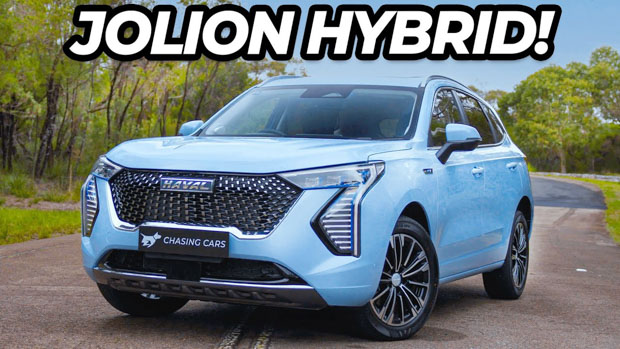
It’s been over a decade since China’s Great Wall brand first entered the Australian market with the Steed ute. That vehicle wasn’t warmly received – but the manufacturer has worked feverishly in research and development in the intervening years, spawning a broad range of vehicles under different brands – including SUV label Haval and ute-maker GWM.
We’ve reviewed the Haval Jolion in the past and compared it to the Kia Seltos – and for 2023, the brand is adding an in-vogue hybrid powertrain to the Jolion lineup, giving the small SUV a more direct competitor to the brand-new Toyota Corolla Cross that hit Australian shores this week.
Priced at $40,990, the Jolion Ultra Hybrid sits atop a range that kicks off at $28,940 driveaway for the base Jolion Premium. The hybrid is a big $7000 step up over the equivalent turbo-petrol version, but as the name suggests, the Jolion Hybrid adds electrification into its powertrain, meaning that though it’s a steeper price initially, owners should save at the petrol pump.
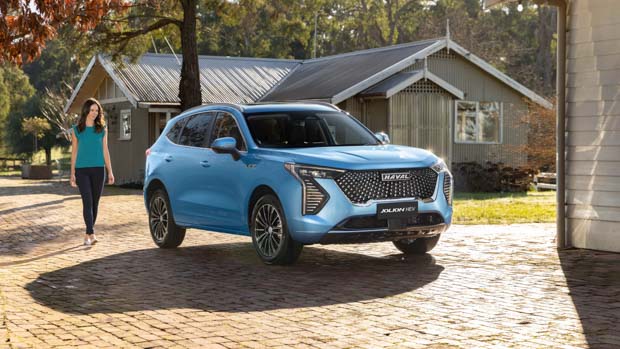
At $40,990, this Jolion Ultra Hybrid isn’t all that cheap in the scheme of small hybrid SUVs, especially considering that the Toyota Yaris Cross Hybrid starts around $32,000 on the road. That said, the cheapest Corolla Cross hybrid will set you back $39,390 driveaway in NSW – and in GX form, that car is far less lush than the Jolion Ultra hybrid.
That’s something the Jolion hybrid has going for it right out the gate: a plethora of standard kit, including features like 18-inch alloy wheels, a panoramic sunroof, and a heads up display.
But with competition in the hybrid-powered small SUV space tougher than ever, it’s it worth beating wait times and jump into a Jolion Hybrid, or will Aussie motorists be better off holding out for something from a more established brand?
As is the case with most hybrids, it’s worth knowing what the car is doing under the bonnet before diving into the nitty gritty of driving dynamics.
The Jolion Ultra Hybrid is powered by a 1.5-litre naturally-aspirated petrol engine that’s mated with an electric motor. This system saves fuel but it also boosts torque, making the car feel more nippy at low speeds.
The petrol engine makes 70kW and 125Nm, whilst the electric motor is good for 110kW/250Nm. Together, combined figures sit at 139kW/375Nm, which is a significant boost over the petrol-only Jolion’s outputs of110kW/220Nm.
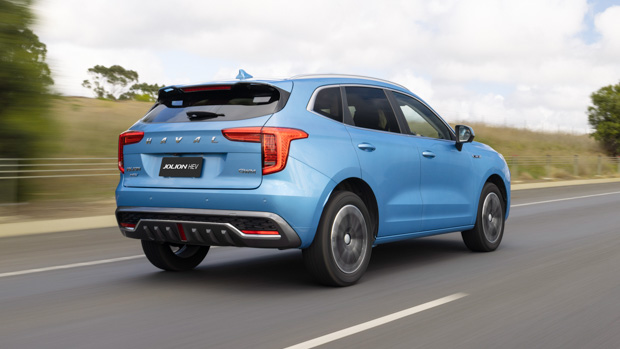
There’s then the topic of the transmission to cover, as it’s a bit of an oddity. Haval calls it a Dedicated Hybrid Transmission (DHT), and it’s made up of a pair of CVTs, with one to handle low-speed driving, and the other for high-speed duties.
All this might sound a little too complicated, but in the real world,, it translates to a remarkably smooth driving experience. The transmission winds itself up like any other CVT when the accelerator is pushed, but seems to settle to low RPMs faster than the usual CVT once at cruising speed due to the separate high-speed unit.
On the road, the Jolion always starts off with the electric motor, as its dedicated 250Nm of torque is more than enough motivation to get the Jolion going – in fact, it’s so powerful on electric power that the front wheels spin with too much throttle.
From a standstill, the Jolion’s petrol engine will then kick into life to assist the SUV in getting up to speed, but this doesn’t cause much more than a mild vibration. This disconnect between the petrol engine and electric motor is quite obvious at first, but even after just a few days with the Jolion, it isn’t as noticeable.
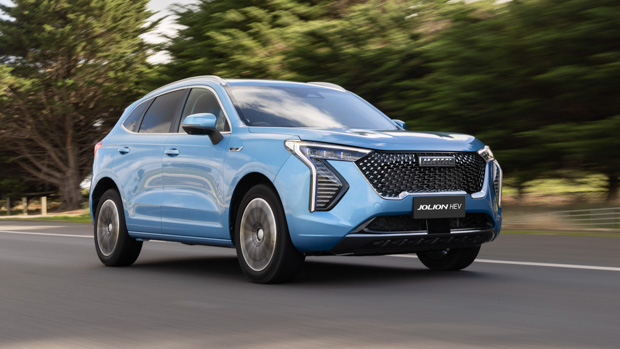
On the performance front, Haval doesn’t offer a 0-100km/h claim for the Jolion Hybrid. In the real world, it behaves like many hybrids: it’s rapid off the line but the acceleration tapers off as you build speed. It also depends how much charge is in the battery.
During independent performance testing, we found that the Jolion Hybrid’s performance varies based on how much regen the 1.76kWh battery has been able to recoup under braking. The first run saw the Jolion do a fairly swift 8.02-second 0-100km/h run, before performance dropped off to 8.42sec and then 8.82sec with repeated full-throttle launches.
It’s worth noting that in a real-world situation, the battery would have time to recharge via normal driving between bursts, so an eight-second 0-100km/h time is to be expected.
Drivers have the choice of four driving modes in the Jolion hybrid, including normal, eco, sport, and snow.
During my time with the Jolion, ecowas the mode I used mostly, mainly to keep fuel consumption to a minimum, but also because I felt it was where the Jolion felt most comfortable.
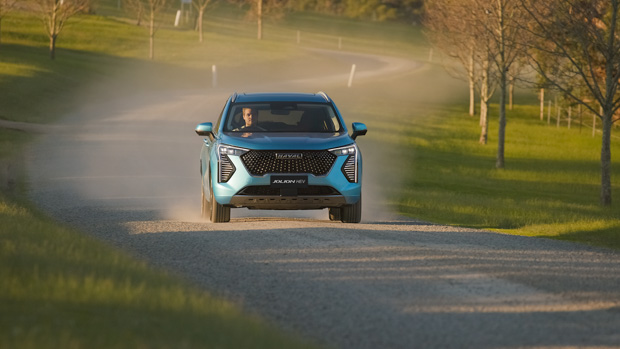
Due to the nature of the Jolion Hybrid, selecting sport mode didn’t change the driving dynamics much, but there were definite differences. For one, the steering gained some added weight, but even so, it still felt quite vague, and not overly involving.
However, in sport mode, the petrol engine seemed more eager to kick in earlier, and assist the electric motor in accelerating, which further diminished any sense of disconnect between the two power sources.
I found the ride that the Jolion offers to be quite good, but poor road conditions around Sydney managed to poke holes into the composure. Over most surfaces, the ride felt supple, but the poor-condition concrete roads of the inner city gave the suspension more of a brittle feeling.
Safety is an area where the Jolion Hybrid excels with standard kit, as Haval’s whole suite of advanced tech is included. This includes adaptive cruise control, lane-keep assist, blind-spot monitoring, as well as the other regular inclusions.
The adaptive cruise control system is particularly impressive at the Jolion Hybrid’s price point, as it has the ability to come to a complete stop, and start again once the accelerator is pressed. One slight issue I had with the Jolion was how attentive the driver monitoring system was, but this is easy enough to switch off in the menus.
There’s no denying the premium feeling of the interior in the Jolion, and this is down to the impressive appointments around the cabin. Soft-touch materials cover the majority of surfaces within arm’s reach, and this is contrasted with the aluminum panel surrounding the gear selector.
Throughout my time with the Jolion, I did struggle with the rotary gear selector, especially when making three-point turns. This is because it’s a free-spinning dial, and going between drive and reverse can be frustrating at times: the dial spins, but the gears don’t always change immediately, leaving you checking the instrument cluster rather than knowing you’ve achieved your goal by feel alone.
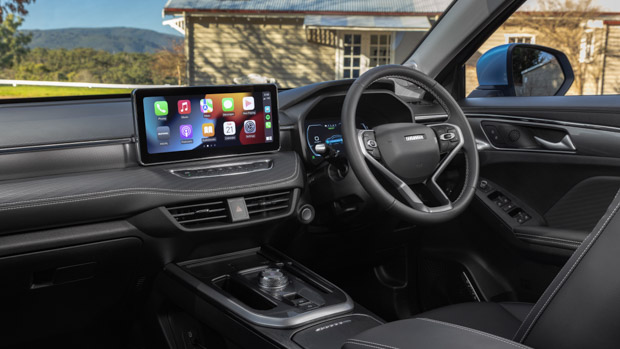
The leather steering wheel is also nicely wrapped, but it is quite slim, and because of this, feels on the cheap side.
In the standard Jolion models with a petrol engine only, a haptic touch panel sits beneath the infotainment screen to control, and it’s not easy to use. I’m happy to report that this has been changed to physical shortcut buttons in the hybrid.
Not only are the hybrid’s real buttons easier to use, but it means that the climate control settings can be changed without drivers having to take their eyes off the road.
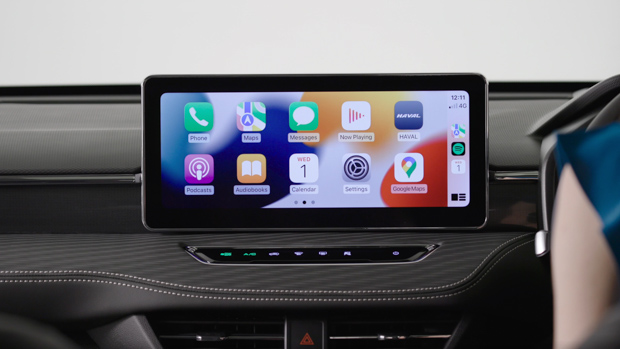
In terms of cabin technology, the Jolion Ultra Hybrid gets a 7.0-inch digital cluster behind the steering wheel, a heads-up display, and a 12.3-inch infotainment display. Apple CarPlay and Android Auto are both included, but to use these systems, drivers will have to plug their phones in with a USB-A cable. A wireless phone charging pad also comes as standard in the Ultra grade.
As a whole, the infotainment system’s operating system is good to use, but it can be pretty complicated at times. For instance, the only way to control audio volume in the cabin is via the steering wheel. If the passenger wants to change it, about three different menus need to be navigated through.
Space across the front row is impressive, but the seats don’t offer much in the way of support as they’re quite flat. Tall seat bolstering isn’t something you expect from a small hybrid-powered SUV, but I was a little disappointed on this front, as the seats allow drivers to slide around during corners.
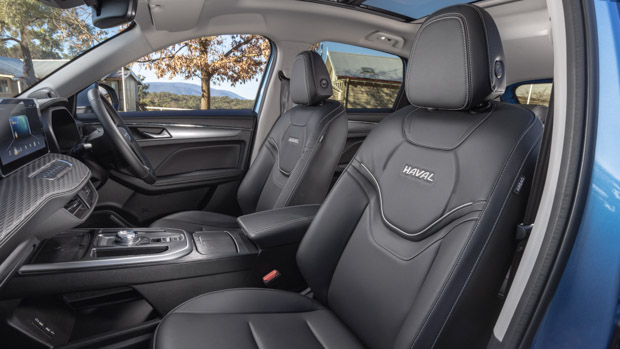
Back in the second row, there’s also a decent amount of head and legroom, and the centre seat is perfectly flat. It’s also worth noting that the floor is completely flat across the three seats back there, so those who sit in the centre seat will have no issue with legroom, making the Jolion hybrid more practical than some rivals.
As for boot space, the Jolion Hybrid is slightly down from petrol-only Jolion’s 430-litre capacity due to the 1.76kWh battery being mounted beneath the boot. 390 litres is what’s available in the hybrid, but this smaller space does have the advantage of being perfectly flat as opposed to the lip that the regular Jolion gets.
The hybrid also loses a spare tyre due the battery, meaning owners will have to make do with a recovery kit instead. By contrast, the Toyota Corolla Cross has a spare tyre in front-wheel drive hybrid form, but loses it only with AWD – a feature unavailable on the Jolion hybrid.
Haval claims a combined fuel economy figure of 5L/100km for the Jolion hybrid, and we were pleasantly surprised to land square on that number during our independent road testing.
Only at very low speeds does the electric motor drive the wheels exclusively, and that’s to be expected with just a 1.76kWh battery onboard.
Mid-range acceleration seems to be exclusively handled by the petrol engine, and during a run down corner-heavy back roads we saw consumption rise to 6.6L/100km, but then settle again on the motorway. At cruising speed, the electric motor works in conjunction with the engine to keep consumption to a minimum.
It’s worth noting we’ve seen slightly better fuel consumption from Toyota’s hybrid SUVs – especially the ultra-frugal Yaris Cross and C-HR hybrid models – but 5L/100km is still really competitive for this segment.
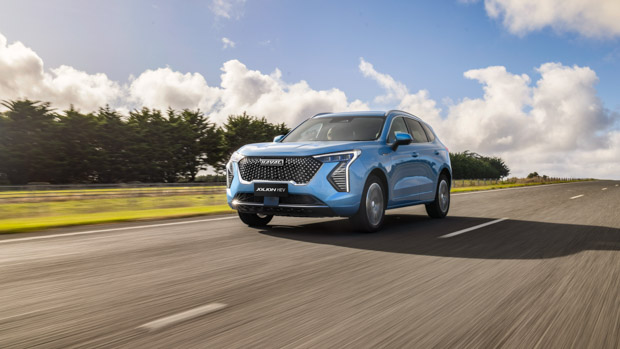
Another win for the Haval Jolion Ultra Hybrid is the fact that it only needs 91 octane petrol.
In terms of servicing, GWM offers a capped price servicing plan that covers the Jolion Ultra Hybrid for five years, and up to 70,000km.
This plan costs $1550 in total, with service intervals of 15,00km. This is significantly cheaper than something like a Kia Niro Hybrid, which will cost $3000 in servicing throughout the same period. However, a Toyota Corolla Cross hybrid can be serviced for five years/75,000km for $1150.
On the warranty front, GWM offers a seven year/unlimited KM warranty across the whole range. GWM’s brands equal Kia and Skoda in offering Australia’s best warranty. The Mitsubishi Eclipse plug-in hybrid has a 10 year/200,000km warranty, but only if the car is serviced with Mitsubishi dealers after the five year mark.
As a whole, the Haval Jolion Ultra Hybrid is an impressive package that feels like it’s punching above its weight in more ways than one.
From the standard kit, to the bargain service and warranty plans, through the fuel economy, there’s no doubt that this small SUV takes the fight to the more traditional vehicles in the segment.
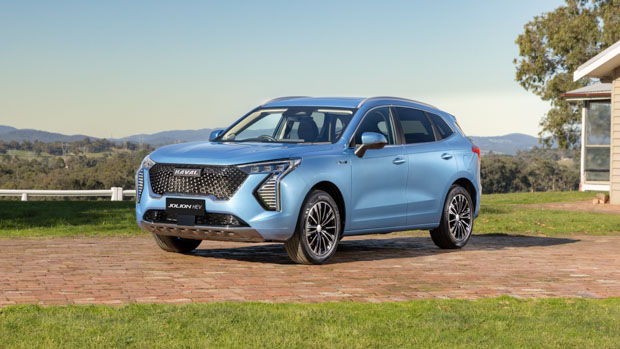
I’d argue that the only real issue with this car comes in the form of its drive-away price of $40,990. This figure represents a $7,000 premium over the regular petrol-powered Jolion, which is quite a hefty jump. Assuming that both Jolions are driven 15,000km in a year, and petrol stays at $1.90 per litre over this time period, it will take eight years to break even in the hybrid-powered Jolion.
Other brands like Toyota generally make their hybrid cars a $1500-2500 leap over the equivalent petrol, which tends to make the break-even drive time more like three years.
With this in mind I’d argue that the standard Jolion Ultra is a better option, as all the same standard kit is there, but it’s a significantly cheaper purchase price to stomach.
Variant tested ULTRA HYBRID
Key specs (as tested)
About Chasing cars
Chasing Cars reviews are 100% independent.
Because we are powered by Budget Direct Insurance, we don’t receive advertising or sales revenue from car manufacturers.
We’re truly independent – giving you Australia’s best car reviews.
The estimate provided does not take into account your personal circumstances but is intended to give a general indication of the cost of insurance, in order to obtain a complete quote, please visit www.budgetdirect.com.au. Estimate includes 15%^ online discount.
^Conditions Apply
Budget Direct Insurance arranged by Auto & General Services Pty Ltd ACN 003 617 909(AGS) AFSL 241 411, for and on behalf of the insurer, Auto & General Insurance Company Limited(ABN 42 111 586 353, AFSL 285 571).Because we don’t know your financial needs, we can’t advise you if this insurance will suit you. You should consider your needs and the Product Disclosure Statement before making a decision to buy insurance. Terms and conditions apply.
Indicative quote based on assumptions including postcode , 40 year old male with no offences, licence suspensions or claims in the last 5 years, a NCD Rating 1 and no younger drivers listed. White car, driven up to 10,000kms a year, unfinanced, with no modifications, factory options and/or non-standard accessories, private use only and garaged at night.
^Online Discounts Terms & Conditions
1. Discounts apply to the premium paid for a new Budget Direct Gold Comprehensive Car Insurance, Third Party Property Only or Third Party Property, Fire & Theft Insurance policy initiated online on or after 29 March 2017. Discounts do not apply to optional Roadside Assistance.
2. Discounts do not apply to any renewal offer of insurance.
3. Discounts only apply to the insurance portion of the premium. Discounts are applied before government charges, taxes, levies and fees, including instalment processing fees (as applicable). The full extent of discounts may therefore be impacted.
4. We reserve the right to change the offer without notice.